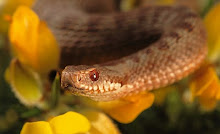They have been cage trapping them Adrian as well as shooting them, but it is not proving effective enough. They say they need more people on the ground.
What I am worried about is that they may hire hunters to help and this could be bad news as we could then start seeing orphaned hoglets.
If a feeding sow is killed and there are no other feeding sows in the sounder, the little ones will starve to death as they are dependant on their mums milk for up to 4mths.
And I expect this news has already spread, so the poachers will be out in force. Again shooting anything that moves, regardless of whether it is feeding young or no.
Wolves: Hah, I would love to hear the cries then. The people around here would probably make up a new nursery rhyme about how you will be eaten if you venture into the woods!
Seriously though, the Forest of Dean is not big enough (42 square miles) to re-introduce wolves.
After the boars have eaten a few thousand people, then the time will be right to introduce them!
Close the area to people who don't like wildlife: Now that's the best answer I have heard in a very long time. You know, there are dozens of other places around here where the wildlife haters can walk their dogs, without seeing anything larger than a rabbit, but they won't, why? They are not prepared to change their routine or their habits for the sake of our wildlife.
I know quite a few people who walk their dogs in the forest. Some of them hate the boars, yet still let their dogs run around off-lead. Others love seeing them, but keep their dogs on a retractable lead so they can easily pull them back.
Can you see a trend here? I call it respect and without it there will always be problems for some.
The recent death of the greyhound was sad, but this type of dog likes to chase things and should not be off the lead where wildlife is. Whether it slipped the lead or no, this dog was out of control – either that or the owner didn’t bother calling it back.
It's OK for a dog to chase and sometimes injure wildlife, but when wildlife chases and injures a dog, the owner kicks up holy hell!

Rob











